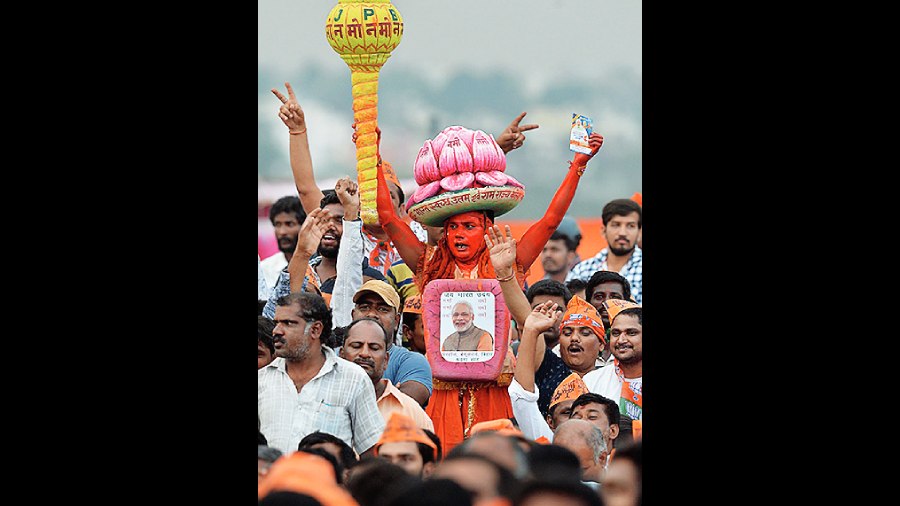Book: Tryst With Strong Leader Populism
Author: P. Raman
Publisher: Aakar
Price: Rs 695
Why was February 19, 2013 a crucial day in the political life of Narendra Modi? That was the day when the Rashtriya Swayamsevak Sangh decided to place the might of the ‘social organization’ behind its pracharak, the then chief minister of Gujarat, as the party’s prime ministerial candidate for the 2014 Lok Sabha elections.
The head of the RSS set two conditions for Modi, who reportedly had had a ‘love-hate relationship’ with the organization he grew up in. The first was that he should not ‘betray’ the ideals of the RSS as the former prime minister, Atal Bihari Vajpayee, and L.K. Advani had done. The second condition was that Modi should understand the implications of the commandments issued from Nagpur where the RSS is headquartered. The idea was to avoid open confrontation between the BJP and its parent that had become a common feature during the Vajpayee regime. Modi was willing. Leaders like Rajnath Singh and the late Arun Jaitley were won over; the only exception being the late Sushma Swaraj, who remained steadfastly loyal to her mentor, Advani. The rest, as the saying goes, is history.
The author, P. Raman, belongs to a generation of news reporters who place facts before opinion. He started his career as a sub-editor of the weekly, The Century, set up by V.K. Krishna Menon. Thereafter, Raman worked for more than a dozen dailies and weeklies, including The Indian Express, The Economic Times and Business Standard. The quintessential reporter in Raman is revealed in this book that is densely packed with information. It not only contains a plethora of facts in the public domain but also includes insights from the proverbial ‘reliable sources’, including several in the sangh parivar.
In the two chapters, the “Making of a Messiah” and “I am Everything”, Raman meticulously documents how Modi sought to remove the deadwood from the bureaucracy and introduce innovations in administration. However, given his disdain for Delhi’s “insiders” and for structured decision-making, he over-centralized powers in the Prime Minister’s Office to an extent that, according to Raman, ended up making him a whimsical and “dismal performer”.
Despite the second condition set for him by the RSS, Modi’s trusted lieutenant, Amit Shah, ended up rubbing the organization the wrong way on several occasions, eliciting protests from front organizations and sections of the sangh parivar. Modi’s high-handedness, especially on the farm laws, resulted in the Shiromani Akali Dal leaving the National Democratic Alliance. Earlier, the Shiv Sena had parted ways with the BJP in Maharashtra when it was outsmarted by the Nationalist Congress Party leader, Sharad Pawar. But his personal charisma seemed unassailable, as is his commitment to a Hindu rashtra and the spread of Islamophobia.
Raman meticulously documents Modi’s successes and failures with sharp comments. He draws up a list of scandals that have taken place; enumerates the systematic manner in which institutions of governance and law-enforcement have been weaponized against his opponents; documents how large sections of the media have cravenly capitulated; and reports on the brazen manner in which lies have been propagated to bolster the image of the ‘Supreme Leader’. He highlights how the Modi government imposed demonetization in an authoritarian manner and, more recently, his government’s callous handling of the pandemic and the cruel treatment of migrant labourers. How the prime minister deals with popular disenchantment borne out of his unfulfilled promises remains to be seen.
This reviewer has a major grouse against the book’s publisher. The text has hundreds of typographical, grammatical and syntactical errors that divert readers’ attention. Hopefully, a second edition will be published without these glaring bloopers.











